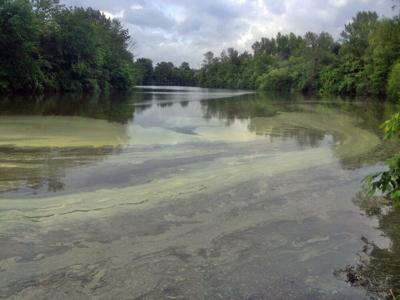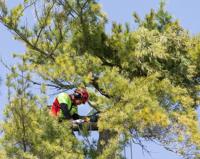As the weather warms, many will open their doors and windows to let in fresh air.
However, a few people will be locking everything down to keep out the pollen that causes seasonal allergies.
According to The Weather Network, close to nine million Canadians live with seasonal allergies, and also almost one million dogs.
One of the most common causes of allergies for Canadians is tree pollen â and the trees are starting to bloom and release their pollen in Ontario now.
According to the , as many as one in four people in Canada suffer from seasonal allergies caused by tree pollen.
Tuesday, May 6 happens to be World Asthma Day, and pollen can aggravate a person’s asthma.
Monitor pollen count
âPollen counts measure how much pollen is in the air and can help people with allergies determine how bad their symptoms might be on any given day,â . âPollen counts are usually higher in the morning and on warm, dry, breezy days, and lowest when itâs chilly and wet.â
Local weather reports can be helpful when planning outside activities.
âPollen season lasts from April to October in Canada, with April and May being the worst for tree allergens and June and July the worst for grass pollens,â .
Ragweed season starts in August and typically lasts until October.
Many municipalities are aware of allergies, The Weather Network said, and plant male trees because they do not flower â which is not only easier to maintain, but they don’t release pollen into the air.
For this week, pollen counts throughout most of the province remain low.
There are a few ways to check on the status of pollen counts in your area.
The Weather Network
The Weather Network offers the pollen count for major cities, like Toronto, Hamilton, Barrie, Muskoka, Mississauga, Peterborough, Oshawa, Niagara, Kemptville, Orangeville and more.
To get started, visit , and replace the municipality in the URL with one near you.
IQAirâs AirVisual
The company launched pollen data in 2023, and has also created an to track the pollen.
Check out the pollen count at  and click on the map to dig into local stats.
Klarify
With an interactive map, you can search your area to see what the pollen count is for trees, grass and weeds.
Visit  to learn more.
Tips to reduce pollen exposure
- Shower or bathe before bedtime to wash off any pollen and other allergens that may have collected in your hair and on your skin
- Avoid going outside, especially on dry, windy days
- Keep doors and windows closed to reduce the amount of pollen that can get in the home
- Staying indoors when the pollen counts are high
- Avoid drying your clothes outside during high pollen times, especially early morning and early evening
Error! Sorry, there was an error processing your request.
There was a problem with the recaptcha. Please try again.
You may unsubscribe at any time. By signing up, you agree to our and . This site is protected by reCAPTCHA and the Google and apply.
Want more of the latest from us? Sign up for more at our newsletter page.





















To join the conversation set a first and last name in your user profile.
Sign in or register for free to join the Conversation